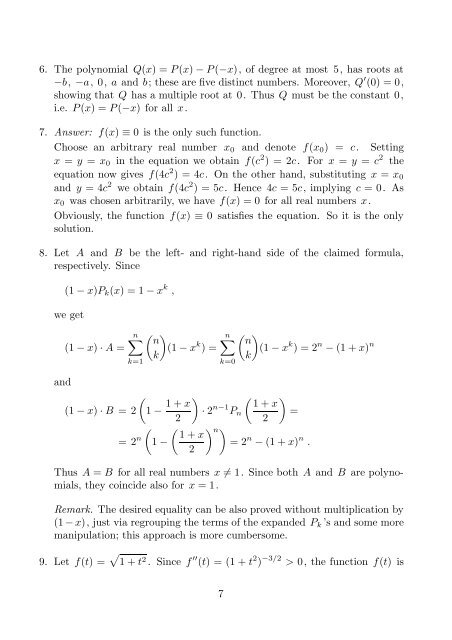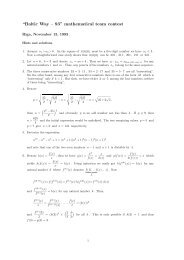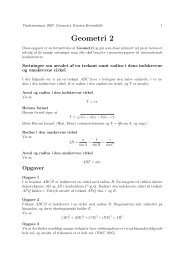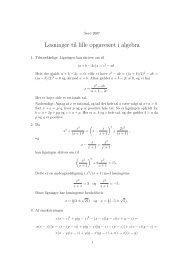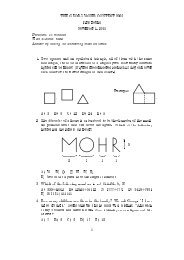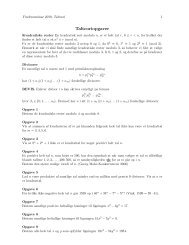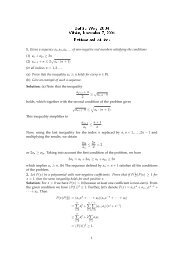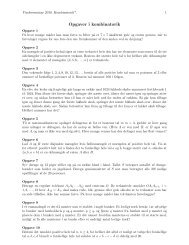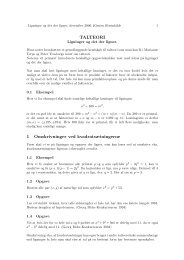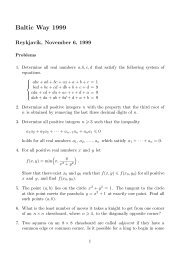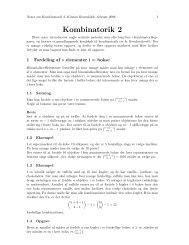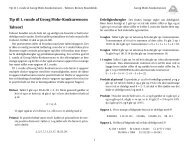You also want an ePaper? Increase the reach of your titles
YUMPU automatically turns print PDFs into web optimized ePapers that Google loves.
6. The polynomial Q(x) = P (x) − P (−x), of degree at most 5, has roots at<br />
−b, −a, 0, a and b; these are five distinct numbers. Moreover, Q ′ (0) = 0,<br />
showing that Q has a multiple root at 0. Thus Q must be the constant 0,<br />
i.e. P (x) = P (−x) for all x.<br />
7. Answer: f(x) ≡ 0 is the only such function.<br />
Choose an arbitrary real number x0 and denote f(x0) = c. Setting<br />
x = y = x0 in the equation we obtain f(c 2 ) = 2c. For x = y = c 2 the<br />
equation now gives f(4c 2 ) = 4c. On the other hand, substituting x = x0<br />
and y = 4c 2 we obtain f(4c 2 ) = 5c. Hence 4c = 5c, implying c = 0. As<br />
x0 was chosen arbitrarily, we have f(x) = 0 for all real numbers x.<br />
Obviously, the function f(x) ≡ 0 satisfies the equation. So it is the only<br />
solution.<br />
8. Let A and B be the left- and right-hand side of the claimed formula,<br />
respectively. Since<br />
(1 − x)Pk(x) = 1 − x k ,<br />
we get<br />
(1 − x) · A =<br />
n�<br />
k=1<br />
� �<br />
n<br />
(1 − x<br />
k<br />
k ) =<br />
n�<br />
k=0<br />
and<br />
� �<br />
1 + x<br />
(1 − x) · B = 2 1 − · 2<br />
2<br />
n−1 � �<br />
1 + x<br />
Pn =<br />
2<br />
= 2 n<br />
� � �n� 1 + x<br />
1 −<br />
2<br />
� �<br />
n<br />
(1 − x<br />
k<br />
k ) = 2 n − (1 + x) n<br />
= 2 n − (1 + x) n .<br />
Thus A = B for all real numbers x �= 1. Since both A and B are polynomials,<br />
they coincide also for x = 1.<br />
Remark. The desired equality can be also proved without multiplication by<br />
(1 − x), just via regrouping the terms of the expanded Pk ’s and some more<br />
manipulation; this approach is more cumbersome.<br />
9. Let f(t) = � 1 + t 2 . Since f ′′ (t) = (1 + t 2 ) −3/2 > 0, the function f(t) is<br />
7


